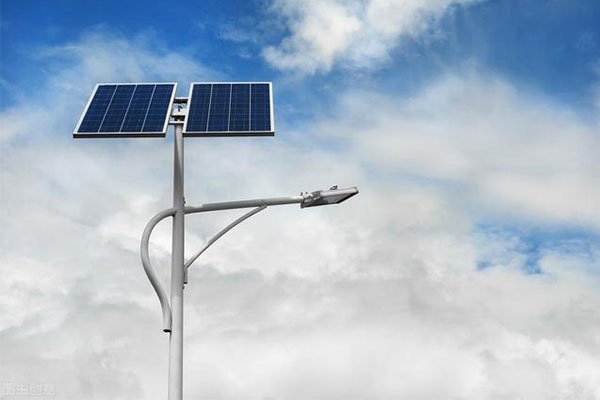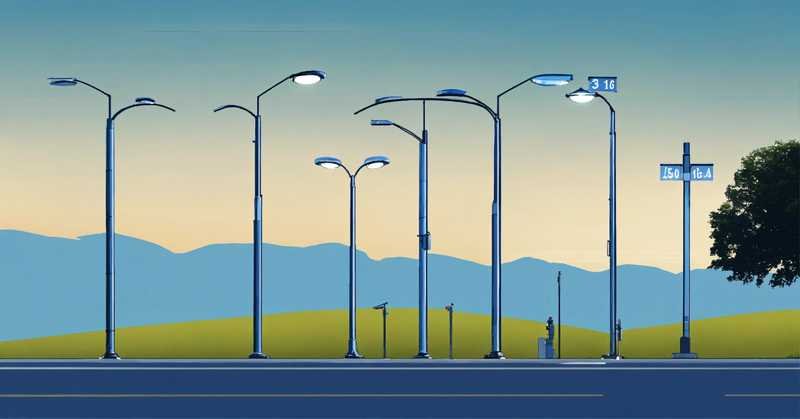Street lights impact more than you think—they influence safety, visibility, and comfort. But not all street lights are created equal.
From gas lamps to smart solar poles, street lighting has evolved fast. Let me walk you through what's being used today—and why.
Why Street Lighting Matters?
Street lights help cities stay safe. They prevent accidents and give people a sense of security after dark.
Street lighting improves visibility for drivers, supports crime prevention, and enhances pedestrian comfort in urban and rural areas.
In the past, cities used oil and gas lamps. Then came electric bulbs. Now, we're talking about LEDs, solar panels, and smart sensors. This journey matters because the type of light we use affects everything from budgets to the planet.
Let’s break it all down.
What Type of Light Is Used in Street Lights Today?
LEDs have taken over most of the world’s roads.
Today, most street lights use LED technology. Other types like High-Pressure Sodium (HPS), Metal Halide, Halogen, Incandescent, Fluorescent, and Solar-powered options are still used in specific cases.
That’s because LEDs check the boxes for power savings, brightness, and long lifespan. But the other types still have their places—whether it’s a historic district or a remote rural road.
Comparison of Street Light Types
Let’s compare the most common types based on energy use, lifespan, color quality, and typical applications:
| Light Type | Energy Efficiency | Lifespan | Color Quality | Usage |
|---|---|---|---|---|
| LED | ★★★★★ | 50,000+ hours | Bright white, clear | Most modern cities |
| High-Pressure Sodium | ★★★★☆ | 24,000 hours | Yellow/orange glow | Highways, industrial areas |
| Metal Halide | ★★★☆☆ | 15,000–20,000 hrs | White light, good CRI | Sports arenas, wide roads |
| Halogen | ★★☆☆☆ | 2,000–4,000 hrs | Warm white | Decorative urban lighting |
| Incandescent | ★☆☆☆☆ | <2,000 hours | Soft warm glow | Historical or vintage areas |
| Fluorescent | ★★☆☆☆ | 7,000–15,000 hrs | Cool white | Some older urban systems |
| Solar-Powered (LED) | ★★★★★ (renewable) | 10–25 years batt. | Varies (LED-based) | Remote, eco-conscious zones |
LED Street Lights: Why Are They So Popular?
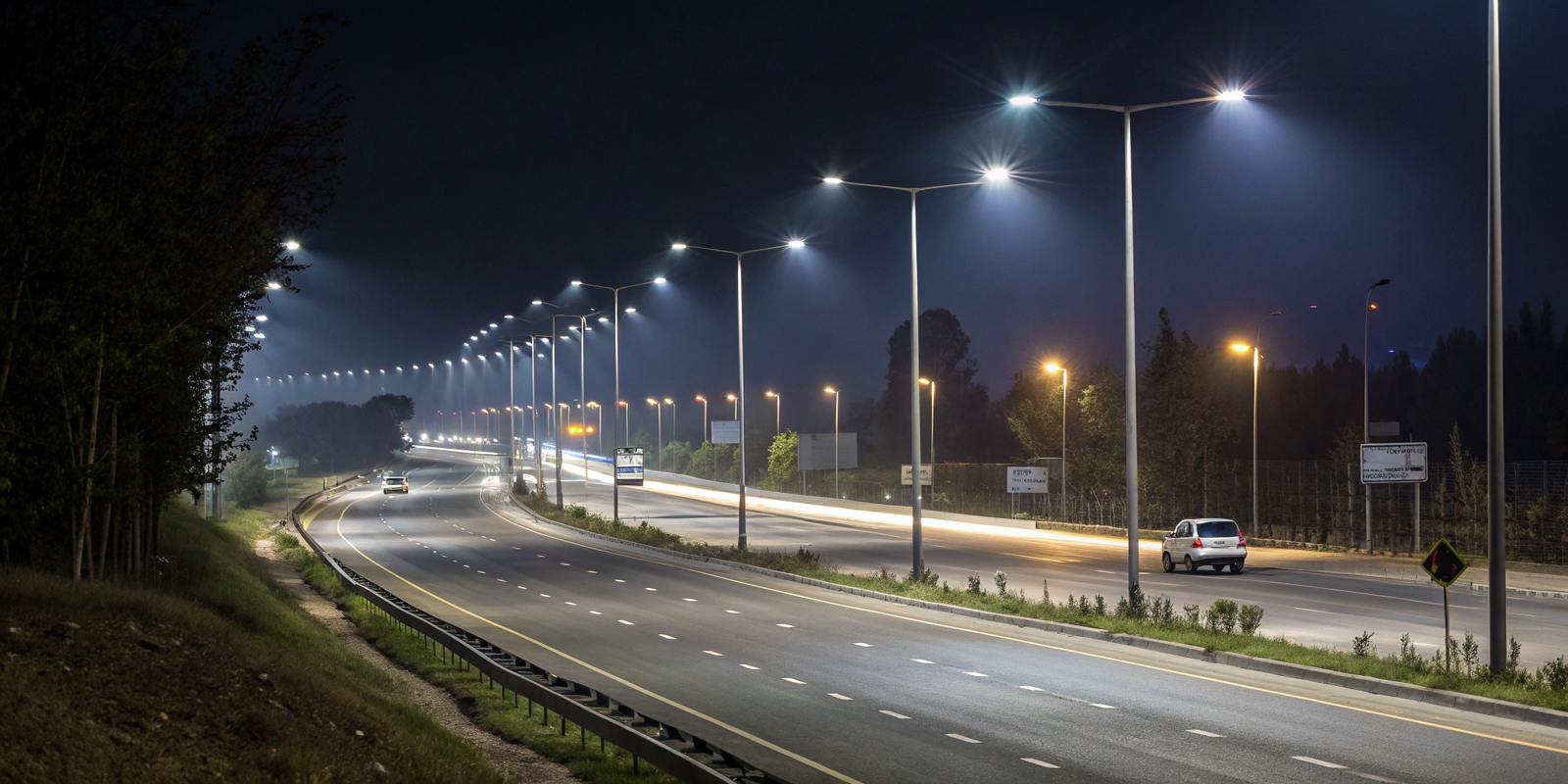
LEDs have changed the street lighting game.
LED lights last long, use less power, and shine bright white light—making them ideal for cities aiming for modern, cost-effective lighting.
- LEDs are highly energy-efficient, consuming up to 80% less electricity than incandescent or halogen.
- Their lifespan exceeds 50,000 hours, reducing the need for constant maintenance.
- The white light offers high color accuracy, making it easier to identify colors on signs, vehicles, and people.
- Most LED systems today include smart features like motion sensors, dimming schedules, and remote monitoring.
- In our African projects, LED lights consistently outperform traditional options in both performance and cost savings.
High-Pressure Sodium (HPS) Lights: Still Around?
You’ve probably seen their golden glow.
High-Pressure Sodium lights were the standard before LEDs. They’re still used for highways and industrial areas because of their good efficiency and reliability.
- These lights produce a warm yellow-orange glow, which can help reduce glare in foggy or dusty environments.
- Their energy efficiency is second only to LED, making them a cost-effective choice in certain areas.
- However, their poor color rendering makes it hard to distinguish colors accurately, which reduces safety in some cases.
- They're often found in industrial parks and long rural highways where installation cost is a concern and aesthetic isn't a priority.
Metal Halide Lights: Bright But Not Efficient
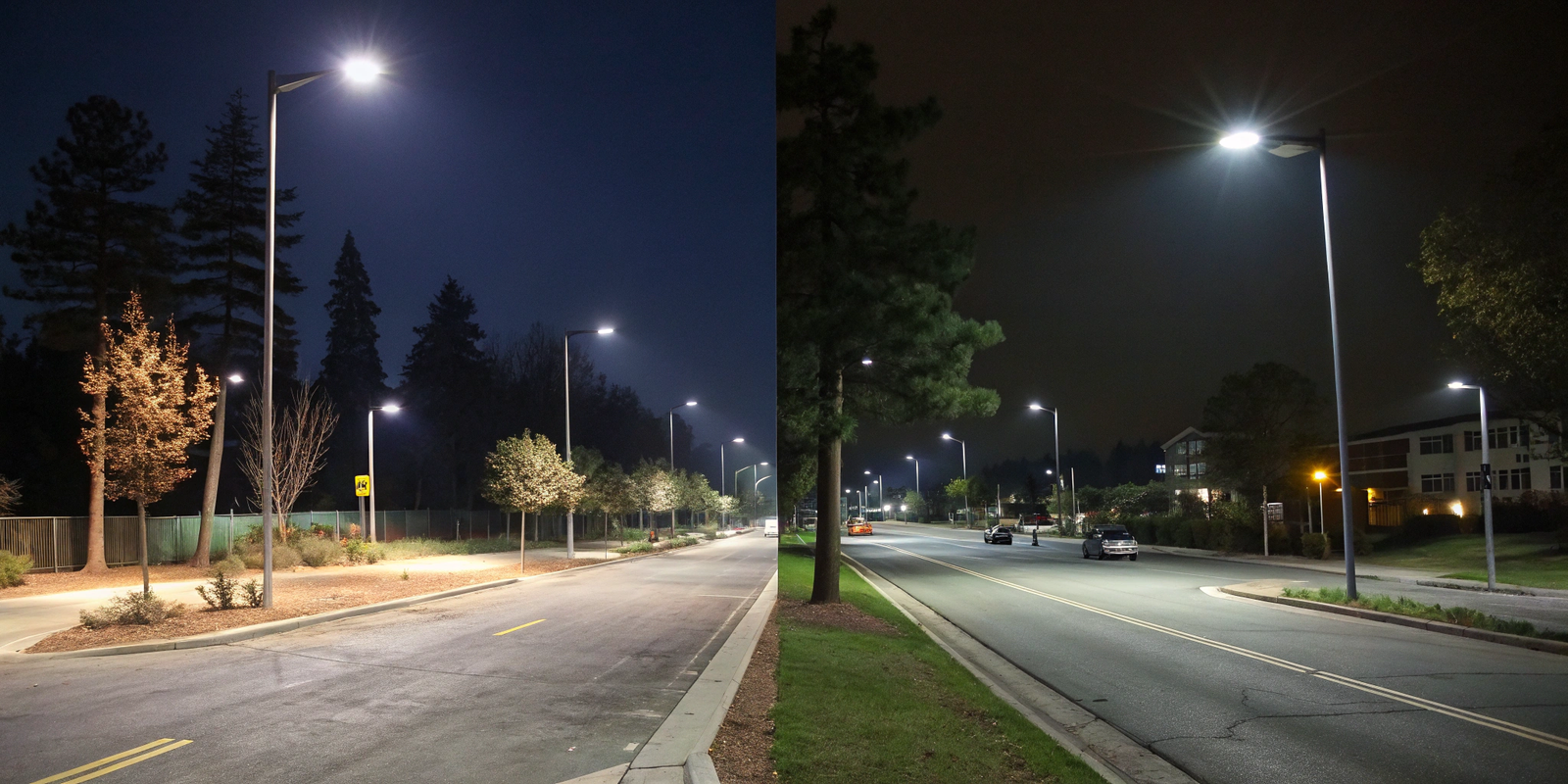
These lights are known for their strong, white beams.
Metal Halide lights offer good color clarity and brightness, but they consume more energy and don’t last as long as LEDs.
- They deliver high-intensity white light with better color rendering than HPS.
- Typical applications include sports fields, large parking lots, and wide roads needing sharp illumination.
- Downsides include a shorter lifespan of around 15,000–20,000 hours, and they require warm-up time.
- Maintenance and energy costs are higher, making them less viable for cities moving toward sustainability goals.
Halogen and Incandescent: Rare but Still Seen
These are older technologies.
Halogen lights are slightly better versions of incandescent bulbs, but both are inefficient and short-lived.
- Halogen bulbs produce brighter and whiter light than traditional incandescent, but still fall short in energy efficiency.
- Both types have short lifespans—halogen around 2,000–4,000 hours and incandescent under 2,000.
- They're typically used in decorative or historical city zones where aesthetics matter more than efficiency.
- Some municipalities retain them in heritage districts for their soft, warm glow that matches vintage-style lamp posts.
Fluorescent Lights: Outdated for the Streets

These were once considered efficient.
Fluorescent lights are cheap and were used in older municipal lighting systems, but they aren’t ideal for outdoor use.
- Their light is cooler and flatter compared to LED or HPS.
- Lifespan ranges from 7,000 to 15,000 hours, but they’re fragile and flicker over time.
- They perform poorly in cold or wet environments, which limits their usefulness on streets.
- Mercury content also raises environmental concerns during disposal.
Solar-Powered LED Lights: The Future?
Clean, green, and off-grid.
Solar-powered LED street lights are ideal for remote, eco-friendly lighting. They combine renewable power with high-efficiency LEDs.
- These systems use solar panels to charge batteries (lithium or gel) during the day and power LED lamps at night.
- They’re perfect for rural areas, off-grid zones, and countries where electricity infrastructure is weak.
- Long-term cost savings are significant—no electricity bills, minimal maintenance.
- I recommend lithium batteries for better lifespan and reliability, and all-weather designs to ensure stable performance.
Factors to Consider When Choosing Street Lights
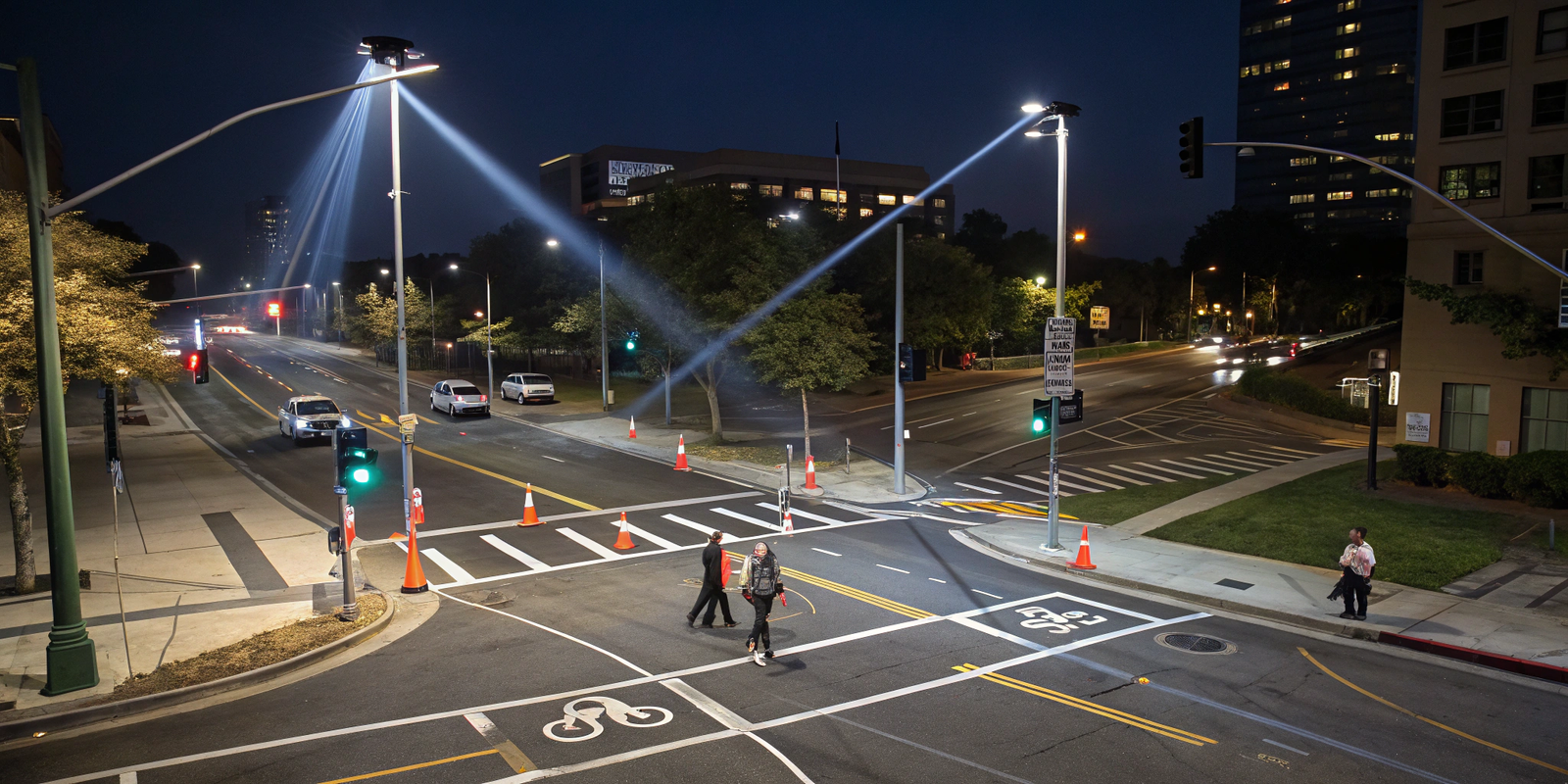
So how do you pick the right light?
You should consider cost, energy use, maintenance, brightness, design compatibility, and local safety rules.
- Installation and maintenance cost: Is the area remote? Labor expensive? Choose options with low upkeep.
- Energy consumption and environmental impact: LED and solar-powered lights win here.
- Brightness and beam direction: High-traffic zones need brighter, better-focused lights.
- Lifespan and replacement needs: Long-life systems save time and labor.
- Aesthetic or urban design compatibility: Consider how the lights match the surroundings.
- Regulatory standards and safety compliance: Make sure products meet local guidelines and certifications.
Trends & Future Technologies in Street Lighting
The street lighting industry is moving fast.
Smart lighting, motion-based brightness, and solar integration are becoming mainstream. Governments are also pushing for greener systems.
- Smart street lighting: New poles come with motion sensors that adjust brightness when movement is detected, reducing energy waste.
- Renewable integration: More systems are using solar and advanced battery storage, especially in Africa and Southeast Asia.
- Policy changes: Many countries now support LED and solar street lighting through tax incentives and public funding programs.
- In my work, I’ve helped multiple clients upgrade to smart solar street lights and benefit from national green policies.
Conclusion
LED lights are the best choice for most modern cities because of their efficiency and lifespan. Solar-powered LED lights are ideal for areas without reliable grids. The final decision depends on your location, budget, and goals.





